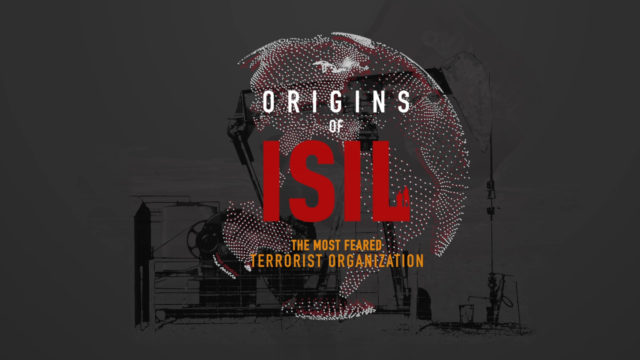The Islamic State, Daesh, ISIS, ISIL. CCTV America’s Jim Spellman breaks down the most feared terrorist organization in the world.

Where did ISIL come from? What do they want?
During the U.S. war in Iraq, an al-Qaeda splinter group formed… led by a fierce fighter… Abu Musab al-Zarqawi. Some of his men were jailed in a U.S. facility in Iraq called Camp Bucca, where the roots of ISIL took hold.After Zarqawi was killed by a U.S. airstrike in 2006, the group broke from al-Qaeda and began calling themselves The Islamic State. Their new leader: Abu Bakr al-Baghdadi — a former prisoner at Camp Bucca.
Like al-Qaeda, ISIL follows the ultraconservative Salafi branch of Sunni Islam. They set out to create and rule a so-called caliphate, or nation-state, ruled by harsh religious doctrine… with al-Baghdadi as their first ruler, or Caliph. Fighters from around the world flocked to join ISIL, and regional terror groups swore allegiance to the Islamic State. Solid numbers are hard to come by, but by mid-2015 it is believed they had some 80,000 fighters.
With shocking speed and efficiency, ISIL took over parts of Iraq and Syria… taking advantage of weak security forces in Iraq and the chaotic civil war in Syria—coming to control an area roughly the size of Austria.
They kill anyone in their way including Shia Muslims –vowing to expand their so-called caliphate to all corners of the globe.
How does ISIL get its money?

How does ISIL get its financing?
According to the U.S. Treasury Department, ISIL is the wealthiest terror group in the world, racking up: -500 million dollars in black market oil sales… -Up to a billion dollars in cash stolen from Iraqi and Syrian banks… -Millions more from extortion and kidnapping for ransom.For more than two years, ISIL has controlled large parts of Iraq and Syria, while waging war on several fronts. How does ISIL finance its attacks?
Unlike other terrorist groups including al-Qaeda, ISIL gets relatively little money from foreign donors. The group instead plunders resources from the territory they control.
According to the U.S. Treasury Department, ISIL is the wealthiest terror group in the world, racking up:
-500 million dollars in black market oil sales…
-Up to a billion dollars in cash stolen from Iraqi and Syrian banks…
-Millions more from extortion and kidnapping for ransom.
U.S.-led airstrikes targeting oil infrastructure are reducing that revenue source, and sanctions aim to block ISIL from operating in the international banking system.
Meantime, ISIL has diversified its funding streams– now dealing in looted antiques and stolen passports while taking over the local agriculture industry. ISIL has even laid out plans to create its own currency, the Islamic State Gold Dinar.
A multinational group has formed to combat ISIL’s financing, but so far the money continues to flow.
How ISIL utilizes social media to spread its message of hate

No terrorist group in history has harnessed technology to spread its propaganda as effectively as ISIL.
What is their message and how do they spread it? ISIL uses social media on the internet to recruit new fighters, preach its religious ideology, promote life in the so-called caliphate and perhaps most importantly to spread fear.
In videos and digital magazines in Arabic, English, Russian and other languages, ISIL urges supporters from around the world to join its jihad. Travel to the caliphate if you can. If not, launch terror attacks in your homeland, the group says. Detailed plans are provided for building bombs and planning terror attacks.
They promote life under the rule of ISIL. Policemen patrol the streets. Doctors tend to the sick. Wheat is harvested for bread, and children attend schools where they learn the Quran — and how to fight.
And then there are the executions: beheadings, burnings, crucifixions, drownings- a de-sensitizing barrage of violent imagery.
When Facebook and Twitter began shutting down ISIL accounts, the group shifted to encrypted services likes Telegram and What’s APP.
Western governments have failed to stop the spread of ISIL propaganda, or to offer a counter narrative to compete with ISIL’s deadly message of hate.
 CGTN America
CGTN America

